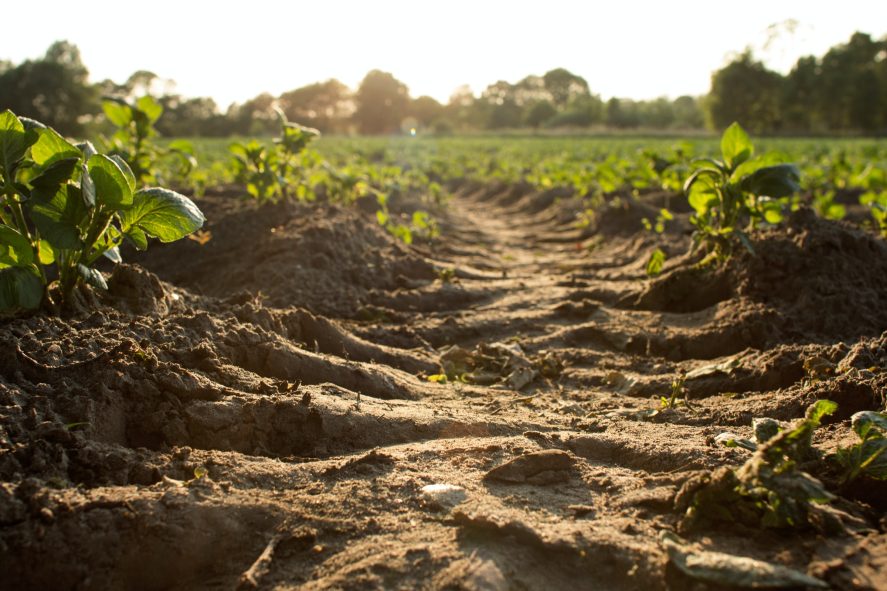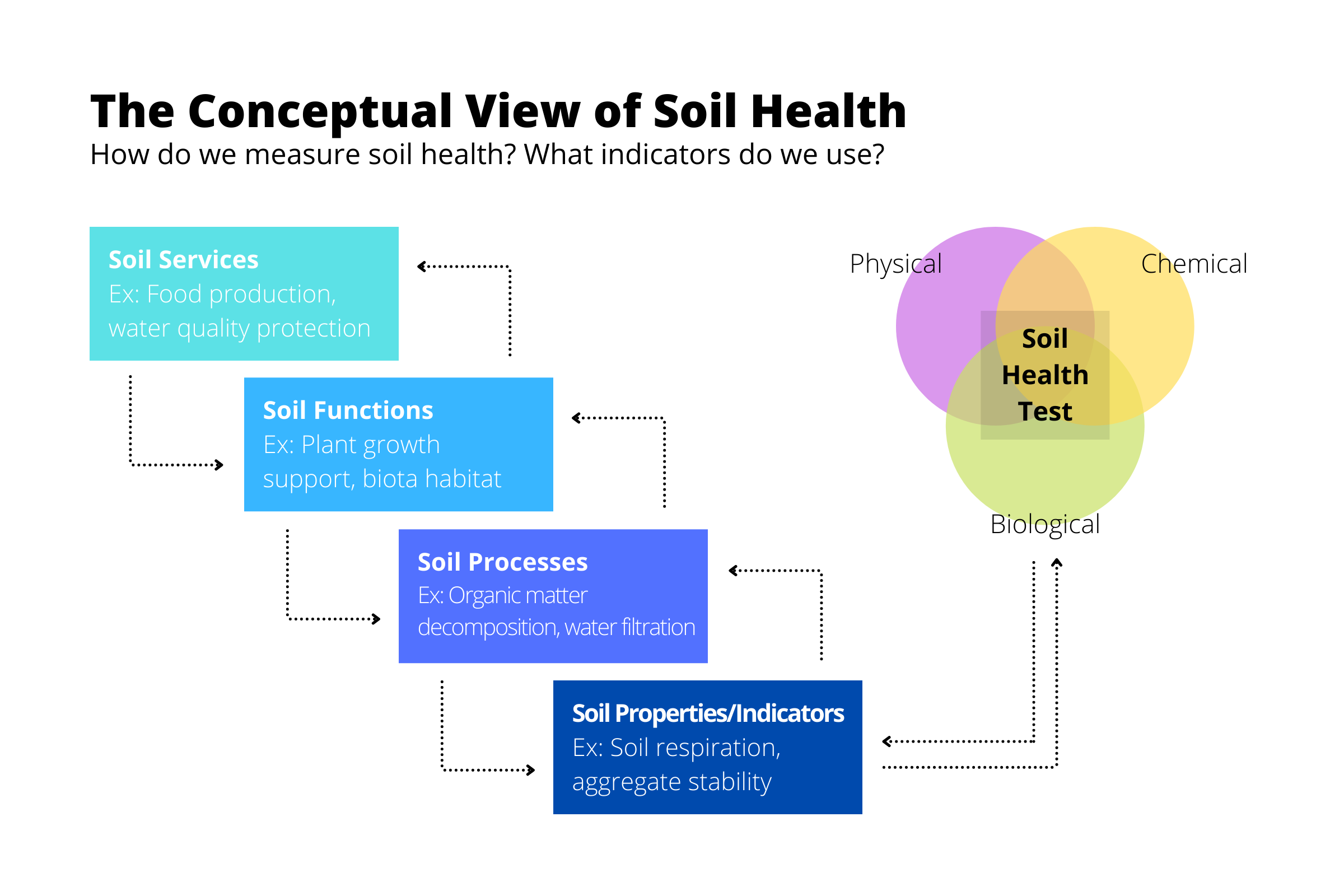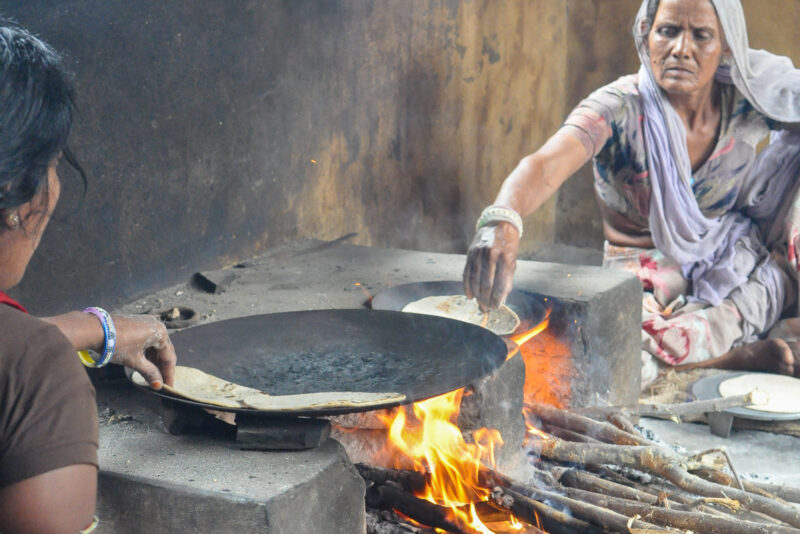Soil Health: What You Should Know

Healthy soils are key to producing nutritious foods. In hopes of boosting agricultural productivity in India, TCI’s Soil Health Project in Bihar examines the links between soil health, land management, and cropping systems to assess their impact on agricultural yields.
But what is soil health, why do we care so much about it, and how do we measure it?
What is soil health?
Like humans, soils are dynamic and complex living systems. Therefore, soil health has been defined and measured in a variety of ways.
Broadly, soil health can be considered as the continued capacity of soil to function as a vital living ecosystem that sustains plants, animals, and humans. These functions might be agricultural—affecting plant and animal health—or in the form of ecosystem services like filtering pollutants, maintaining water quality, or providing a habitat for organisms.
Healthy soils affect not just crop production but broader social and ecological services like supporting human health, the habitation of animals, and enhancing water and air quality.
Why do we care?
On a global level, soils directly contribute to the provision of basic human necessities like food, clean water, and clean air. Soils also contribute to dozens of essential ecosystem services that affect the lives and livelihoods of all humans. For example, healthy soils produce more crops, which can improve food security and enable farmers to increase their incomes.
The United Nations Sustainable Development Goals (SDGs) include 17 global goals to build a “sustainable future for all.” While healthy soils may not be directly mentioned in any of the goals, soil functions affect almost all land-related SDGs.
Human-induced soil degradation like erosion, intensive cultivation, over-grazing, land clearing, salinization, and desertification are estimated to affect almost 40% of the world’s agricultural land. Degradation is also a major reason for the gap between actual and potential yields, especially in the tropics where 500 million hectares of land is estimated to be affected.
In Bihar, where we’re currently studying how soil health can be improved through sustainable land management practices in rice-wheat systems, this decline in soil quality has been the focus of much recent research. The continuous intensive cropping of rice-wheat systems often leads to loss of soil organic matter (SOM), nutrient imbalances, groundwater depletion, and increased pest resistance. The process of transplanting rice into puddled soils can lead to the loss of soil aggregate structure and the development of a hard plow pan. The decreasing using of farmyard manure and increasing use of chemical fertilizers has also led to micronutrient deficiencies (like zinc and boron) in the soil.
How do we measure soil health?
Soil health is a complex concept and most of the processes it encapsulates cannot be measured directly. Instead, they are generally evaluated using soil indicators as proxies for specific processes. Choosing the appropriate indicator requires a thorough understanding of dynamic soil properties, which often vary by region, landscape position, or land use.
Traditional views of soil quality often consider soils from the sole perspective of crop productivity. This has led to a historical over-emphasis on chemical properties because nutrients were often limiting factors for crop yields. But chemical properties are not indicative of the long-term resilience of soils, which requires a more comprehensive consideration of physical, chemical, and biological processes, as well as the interactions among them.
One comprehensive method of appraising soil health is the comprehensive assessment of soil health (CASH) approach, which measures 15 soil properties representing physical, biological, and chemical processes. These properties were chosen for their relevance to important soil processes, consistency and reproducibility, ease of sampling, and their low cost to analyze. The 15 properties are:
- soil pH
- organic carbon
- extractable phosphorous
- extractable potassium
- Micronutrients: sulfur, boron, zinc, copper, iron, and manganese
- Permanganate oxidizable carbon (active carbon)
- wet aggregate stability
- soil respiration
- autoclave-citrate extractable protein
- available water capacity
- surface hardness
- sub-surface hardness
 The assessment framework also rates the measured value for each indicator relative to its optimal range using a fuzzy normative scoring framework.
The assessment framework also rates the measured value for each indicator relative to its optimal range using a fuzzy normative scoring framework.
CASH was developed at Cornell University and has been rigorously tested in the United States. It has also been evaluated for soils in Jharkhand, India, western Kenya, and coffee-farming regions in Columbia.
Kavya Krishnan is a TCI scholar and PhD candidate studying soil and crop sciences at Cornell University.
Featured image: The sun shines on tracks left in the soil by a tractor driving through farmland. (Photo by Dylan de Jonge on Unsplash)





